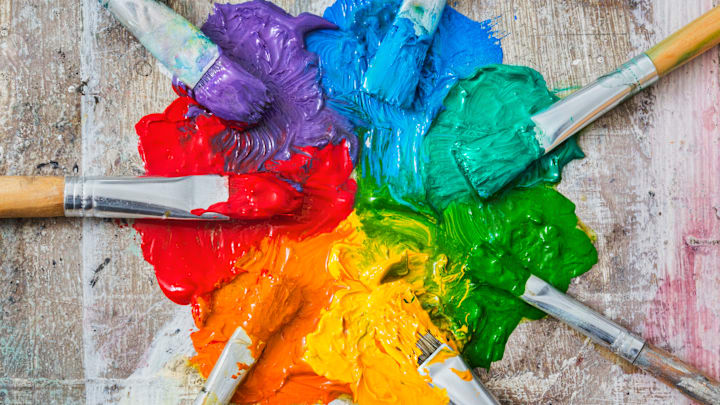It’s not news that many people turn to arts and crafts for the mental health benefits. However, most studies on its outcomes have focused on clinical patients and the effects of specific activities. Now, new research suggests that making art can benefit the general population—and it may even offer greater fulfillment than going to work.
For their study published in Frontiers in Public Health, psychologists looked at the results of the UK Department for Culture, Media and Sport’s Taking Part survey from April 2019 to March 2020. Their analysis covered 7182 participants ages 16 and older sharing their experiences with cultural, digital, and sporting activities.
Participants in the survey were asked to rate their happiness, anxiety levels, and life satisfaction. They also disclosed whether they felt life was worthwhile and how often they felt lonely. Lastly, the individuals were questioned about their engagement with arts and crafts. Thirty-seven percent had participated in at least one craft activity over the previous 12 months.
The team found that those who practiced arts and crafts activities reported higher happiness, life satisfaction, and feelings that life was worthwhile. These results still apply even after controlling for variables known to impact mental health, like gender, age, health, employment, and financial security. On the contrary, the researchers found that crafting did not affect loneliness. They suggest this result might be because some artistic activities are solitary.
The study did have some limitations. The researchers labeled it a correlational study, so it’s unclear if crafting is directly causing feelings of well-being. Additionally, Helen Keyes, lead author of the study, admits that the increase in well-being associated with crafting was small. The activities were linked with only a 2 percent higher rating regarding the feeling that life was worthwhile. However, the boost in life satisfaction was generally higher than what people derive from their jobs. This suggests that arts and crafts can help people who are dissatisfied at work express themselves and find fulfillment—even if they‘re not getting paid to paint or knit.
The results are also noteworthy on a population scale. If governments are looking for ways to improve the mental health of citizens, increased access to creative activities may be a good starting point. As Keyes said in a press statement, “The next step would be to carry out an experimental study where we measure people’s well-being before and after significant periods of crafting.”
Read More About Arts and Crafts:
